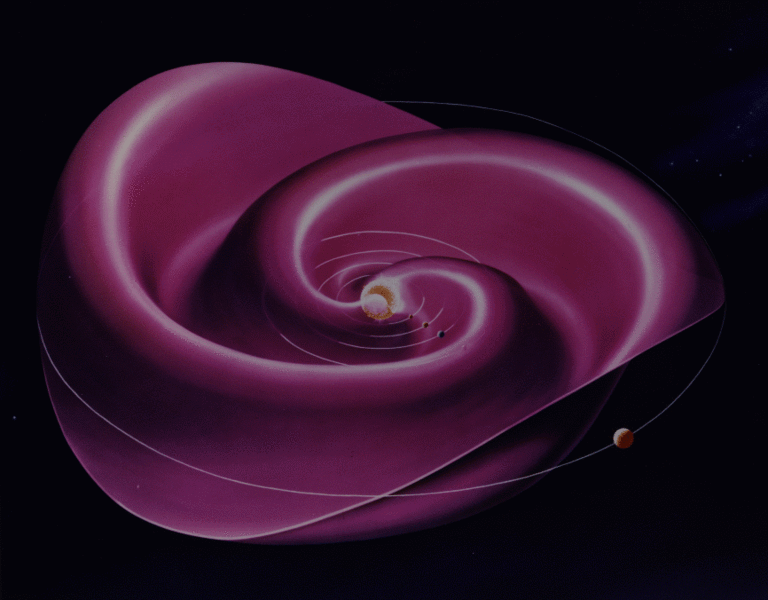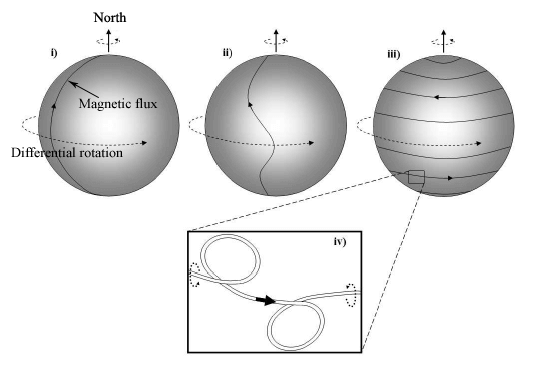The Sun's magnetic field should reverse within 3-4 months. This is not a doomsday scenario. This will really happen but there is nothing to fear, the magnetic field of the sun reverses once every 11 years or so, and it also has advantages - the magnetic 'curtain' protects the earth from cosmic radiation

The Sun's magnetic field should reverse within 3-4 months. This is not a doomsday scenario. This will really happen but there is nothing to fear, the sun's magnetic field reverses once every 11 years or so. The reversal of the sun's magnetic field occurs at the peak of the solar activity cycle, when the sun's internal magnetic dynamo resets on itself. When the field reversal occurs, the magnetic field weakens, and then its strength drops to zero before reappearing in reverse polarization.
While not a catastrophic event, the pole reversal still has an impact, says solar physicist Todd Huaxma, director of the Wilcox Solar Observatory at Stanford University, which monitors the Sun's magnetic field. "The change of the poles will have a ripple effect throughout the solar system," he said.
When solar physicists talk about the reversal of the poles, they mainly mean the "current sheet". A kind of surface that moves across the surface of the sun in a spiral motion out from the sun's equator, a place where the sun's slowly rotating magnetic field excites an electric current. The current itself is weak - only ten billionths of ampere per square meter, but there is a lot of it. The thickness of the ampere flow in this area is 10,000 kilometers and its width is billions of kilometers (see picture). Electrically the entire heliosphere is organized around this vast surface.
During the reversal of the poles, the waves in this surface increase, and as the Earth orbits the sun we enter and exit the surface of the current. This means that we feel ups and downs in the "space weather", when while we are in this current, the solar storms affect us more, so we should expect many aurora events soon.

The Sun's magnetic flux during the solar cycle, illustration: Ian O'Neill
Cosmic radiation is also affected. High-energy particles are accelerated to near the speed of light by supernova explosions and other violent events in the galaxy. Cosmic rays pose a danger to astronauts, and spacecraft/satellites, and some researchers say that they may affect cloudiness and the Earth's climate. The surface of the stream acts as a barrier to the cosmic rays, which it repels when they try to penetrate the inner solar system. The good news is that this wave surface acts as a good shield against these energetic particles from space.
The scientists say that the north pole of the sun is very close to losing its polarity, and the south pole will trail behind it.
"The north pole of the sun has already shown signs of change and the south pole is a little behind" says Phil Scherer, also a solar physicist at Stanford. "Soon the two poles will reverse and the second half of the solar maximum will begin." This means that this weak solar cycle starts the countdown to its end.
For the news in Universe Today
For an article on the subject on the NASA website

6 תגובות
Well 🙂 Have the poles really reversed?
Nothing, the polarity will rebuild until it peaks again and disappears again in 11 years
As stated at the end of the article: "Scientists say that the north pole of the sun is very close to losing its polarity, and the south pole will stretch behind it.
"The north pole of the sun has already shown signs of change and the south pole is a little behind" says Phil Scherer, also a solar physicist at Stanford. "Soon the two poles will reverse and the second half of the solar maximum will begin." This means that this weak solar cycle starts the countdown to its end.”
That's pretty ominous, isn't it? Is it possible to give a broader explanation about the sun losing its polarity?
Thank you!
The reversal of the poles is the culmination of the sunspot cycle. It is therefore difficult to distinguish between the effects of the sunspots and the effects of their midpoint.
If the magnetic poles change direction every 11 years, then what effects did we feel in the past, 11*X years ago? (X=1,2,3,4,5,6]
And will the inversion affect global warming? About the time of day? Or about the ozone layer in the atmosphere?